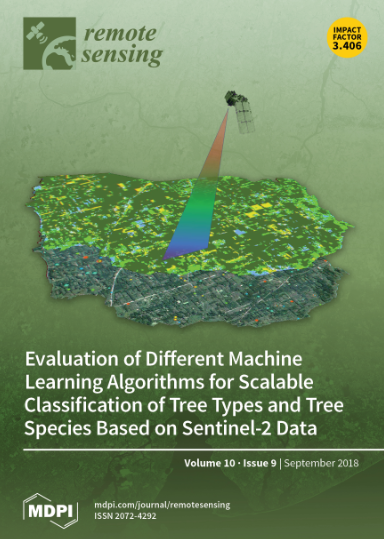Hazard Susceptibility Mapping with Machine and Deep Learning: A Literature Review
IF 4.2
2区 地球科学
Q2 ENVIRONMENTAL SCIENCES
引用次数: 0
Abstract
With the increase in climate-change-related hazardous events alongside population concentration in urban centres, it is important to provide resilient cities with tools for understanding and eventually preparing for such events. Machine learning (ML) and deep learning (DL) techniques have increasingly been employed to model susceptibility of hazardous events. This study consists of a systematic review of the ML/DL techniques applied to model the susceptibility of air pollution, urban heat islands, floods, and landslides, with the aim of providing a comprehensive source of reference both for techniques and modelling approaches. A total of 1454 articles published between 2020 and 2023 were systematically selected from the Scopus and Web of Science search engines based on search queries and selection criteria. ML/DL techniques were extracted from the selected articles and categorised using ad hoc classification. Consequently, a general approach for modelling the susceptibility of hazardous events was consolidated, covering the data preprocessing, feature selection, modelling, model interpretation, and susceptibility map validation, along with examples of related global/continental data. The most frequently employed techniques across various hazards include random forest, artificial neural networks, and support vector machines. This review also provides, per hazard, the definition, data requirements, and insights into the ML/DL techniques used, including examples of both state-of-the-art and novel modelling approaches.利用机器学习和深度学习绘制灾害易感性地图:文献综述
随着气候变化相关危险事件的增加以及城市中心人口的集中,为具有抗灾能力的城市提供了解并最终准备应对此类事件的工具非常重要。人们越来越多地采用机器学习(ML)和深度学习(DL)技术来模拟危险事件的易感性。本研究对应用于空气污染、城市热岛、洪水和山体滑坡易发性建模的 ML/DL 技术进行了系统回顾,旨在为技术和建模方法提供全面的参考来源。根据搜索查询和选择标准,从 Scopus 和 Web of Science 搜索引擎中系统地选取了 2020 至 2023 年间发表的 1454 篇文章。从所选文章中提取了 ML/DL 技术,并使用特别分类法进行了分类。因此,整合了危险事件易感性建模的一般方法,包括数据预处理、特征选择、建模、模型解释和易感性地图验证,以及相关的全球/大陆数据示例。在各种灾害中最常用的技术包括随机森林、人工神经网络和支持向量机。本综述还提供了每种灾害的定义、数据要求以及对所用 ML/DL 技术的见解,包括最新建模方法和新型建模方法的示例。
本文章由计算机程序翻译,如有差异,请以英文原文为准。
求助全文
约1分钟内获得全文
求助全文
来源期刊

Remote Sensing
REMOTE SENSING-
CiteScore
8.30
自引率
24.00%
发文量
5435
审稿时长
20.66 days
期刊介绍:
Remote Sensing (ISSN 2072-4292) publishes regular research papers, reviews, letters and communications covering all aspects of the remote sensing process, from instrument design and signal processing to the retrieval of geophysical parameters and their application in geosciences. Our aim is to encourage scientists to publish experimental, theoretical and computational results in as much detail as possible so that results can be easily reproduced. There is no restriction on the length of the papers. The full experimental details must be provided so that the results can be reproduced.
 求助内容:
求助内容: 应助结果提醒方式:
应助结果提醒方式:


